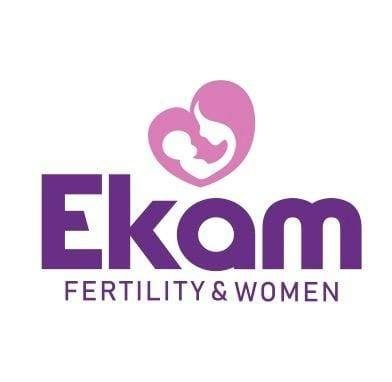In today’s increasingly globalized workforce, language diversity in the workplace is more common than ever. While this cultural richness brings numerous advantages, it also introduces critical challenges—particularly in the areas of health and safety compliance. When workers and employers struggle to communicate effectively due to language barriers, the risks can be severe, leading to miscommunication, accidents, legal liabilities, and even loss of life.
This article explores how language barriers affect health and safety compliance, especially in industries that depend heavily on clear communication, such as construction, manufacturing, healthcare, and logistics.
The Importance of Clear Communication in Health and Safety
Effective health and safety compliance relies on the accurate delivery and understanding of essential information. This includes safety procedures, emergency protocols, signage, training instructions, and the use of protective equipment. If a worker cannot understand the language used in safety instructions, the chances of injury, non-compliance, and workplace incidents increase significantly.
For example, a construction site may have safety signage warning of high-voltage areas or fall hazards. If an employee cannot read or interpret the sign due to language limitations, they might unknowingly put themselves—and others—at risk.
Real-World Consequences of Miscommunication
According to several health and safety studies, language barriers are directly linked to higher accident rates in multilingual workplaces. Workers who have limited English proficiency are more likely to:
- Misunderstand instructions during safety briefings
- Be unaware of how to report hazards
- Use equipment incorrectly
- Be excluded from informal safety discussions
In industries like healthcare, a misunderstanding can have life-threatening consequences, such as administering the wrong medication or failing to follow proper sanitation procedures.
One documented case involved a warehouse worker who suffered a serious injury after misunderstanding a supervisor’s verbal instructions about machine maintenance. The investigation later found that the employee’s limited understanding of English contributed to the miscommunication and the resulting incident.
Language Diversity in the UK Workforce
Regions across the UK—such as Berkshire, Kent, and Hertfordshire—have seen a growing influx of international workers, especially in construction and care sectors. In fact, companies focusing on Health and Safety Berkshire, Health and Safety Kent, and Health and Safety Hertfordshire report that multilingual training and translated materials have become increasingly essential to maintain compliance and reduce risk.
Employers in these areas often need to navigate not only linguistic differences but also varying cultural attitudes toward safety, authority, and workplace behaviour. For example, in some cultures, workers may hesitate to question authority or report unsafe conditions, which can exacerbate safety issues if not addressed sensitively.
Challenges Faced by Employers
Language barriers in health and safety are not only a risk to employees—they also pose challenges for employers, including:
- Training Effectiveness: Traditional training sessions in English may not be effective for all employees. If workers don’t understand the content, they can’t implement safety practices correctly.
- Documentation: Legal compliance often requires documentation such as risk assessments, incident reports, and safety audits. If these are not understood or completed properly, companies may face legal penalties.
- Supervision: Supervisors may find it difficult to ensure workers are following protocols when communication is limited, especially in fast-paced or hazardous environments.
- Emergency Situations: In emergencies, quick, clear communication is critical. Language barriers can delay response times and worsen the outcome of incidents.
Strategies for Overcoming Language Barriers
Addressing language challenges in the workplace is not just a matter of compliance—it’s a moral and practical imperative. Here are several strategies companies can adopt:
1. Multilingual Training
Providing training materials in multiple languages and hiring bilingual trainers can significantly improve comprehension and retention of safety information. Visual aids, videos, and hands-on demonstrations can also help bridge the language gap.
2. Translated Signage and Documentation
Employers should ensure that safety signs, labels, and manuals are available in the native languages of their workforce. This reduces the risk of misinterpretation and helps reinforce compliance.
3. Use of Interpreters
For high-risk activities or detailed briefings, having an interpreter available can ensure that all workers receive and understand critical information. This is especially useful during onboarding or incident investigations.
4. Foster a Culture of Openness
Encourage workers to ask questions and report concerns, regardless of language proficiency. Creating a supportive environment reduces fear and promotes a proactive approach to safety.
5. Leverage Technology
Mobile apps and digital translation tools can provide real-time assistance, especially in workplaces with dynamic or mobile teams. Safety quizzes and training modules can also be made interactive and multilingual.
The Role of Local Authorities and Compliance Bodies
Local health and safety authorities and inspectors are becoming increasingly aware of the need for inclusive practices. Many offer guidance and resources to help employers improve communication and meet legal requirements. Collaboration between government agencies and private organisations is key to creating safer, more inclusive workplaces.
Conclusion
Language barriers pose a serious threat to health and safety compliance, but with thoughtful strategies and commitment from employers, these challenges can be overcome. By recognising the importance of inclusive communication, companies not only reduce the risk of accidents but also create a more respectful and effective working environment.
Whether you’re managing Health and Safety in Berkshire, overseeing protocols in Health and Safety in Kent, or working to improve standards in Health and Safety in Hertfordshire, addressing language diversity is no longer optional—it’s essential for building a safe, productive workforce.




















































































































































































































































































































































































































































































































































































































































































































































